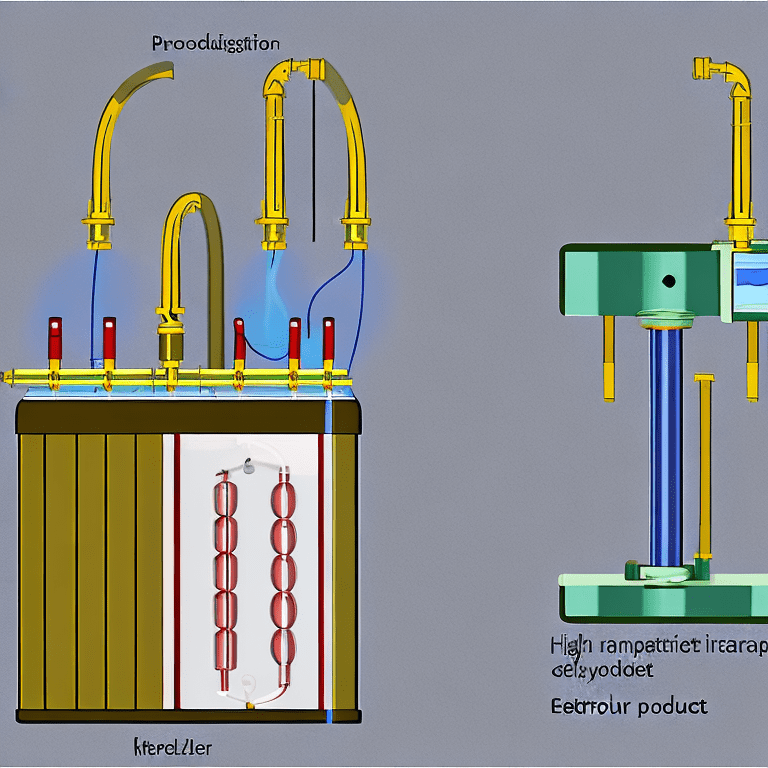Creating a detailed and informative illustration of an electrolyzer for hydrogen production entails capturing a comprehensive view of the entire device before delving into the intricacies of its inner workings. The primary image should showcase the different components of the electrolyzer system, prominently featuring the anode, cathode, membrane, and gas diffusion layers to present a holistic understanding of its functionality. To enhance clarity and precision, a closer examination through a zoomed-in portion dedicated to the gas diffusion layer (GDL) elucidates its pivotal role in the electrolysis process.
The specific focus on the GDL within the electrolyzer’s structure aims to visually depict how this component operates to facilitate the smooth flow of gases, such as hydrogen and oxygen, throughout the electrochemical cell. By emphasizing the porous carbon structure of the GDL in the illustration, viewers can grasp how its design enables effective diffusion of gases to and from the reaction site while supporting electron transfer. Incorporating visual cues like arrows to signify the movement of gases, ions, and electrons elucidates the sequence of events leading to hydrogen production, thereby enhancing the educational value of the illustration.
Color coding can be strategically utilized within the diagram to differentiate between distinct processes and layers within the electrolyzer, aiding in the comprehension of the complex electrochemical reactions taking place. By assigning specific colors to different components or stages of the hydrogen production process, viewers can effortlessly follow the flow of materials and understand their individual roles in driving the overall electrolysis reaction. Adding labels beside each component serves to provide detailed explanations of their functions and significance within the electrolyzer setup, offering valuable insights to observers.
Furthermore, providing an explicit emphasis on elucidating the critical contribution of the GDL to optimizing reaction efficiency is vital in conveying the importance of this particular component. Highlighting how the GDL serves as a conduit for gas diffusion, electron transport, and overall performance enhancement enables viewers to appreciate its essential role in ensuring the effectiveness and productivity of the electrolysis process. By underlining the ways in which the GDL acts as a catalyst for gas interchange and electrochemical activity, the educational illustration can shed light on the significance of this element in driving hydrogen production forward.
Overall, through meticulous attention to detail, visual clarity, and comprehensive annotations, the creation of a high-quality educational illustration of an electrolyzer for hydrogen production can effectively communicate the intricacies of this innovative technology. By striking a balance between presenting an overview of the device and zooming in on the GDL for in-depth analysis, the illustration serves as a valuable tool for enhancing understanding and appreciation of the electrolysis process and its role in sustainable hydrogen generation.







